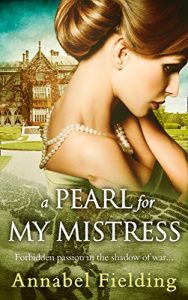Love Letters for Hitler
 We tend to imagine the relationship between Britain and the fascist dictatorships of Europe as one of clear-cut hostility. A sensible, tolerant nation against a bloodthirsty tyrant; a kind of reassuring, Lord of the Rings-like tale. However, the reality was a great deal more complicated – and a great deal darker. It is in the shadows of these other 1930’s that I decided to weave my story.
We tend to imagine the relationship between Britain and the fascist dictatorships of Europe as one of clear-cut hostility. A sensible, tolerant nation against a bloodthirsty tyrant; a kind of reassuring, Lord of the Rings-like tale. However, the reality was a great deal more complicated – and a great deal darker. It is in the shadows of these other 1930’s that I decided to weave my story.
Far from recoiling from the growing shadow of the German Reich, plenty of Britons actually embraced it. These people included a whole range of groups: from young men of the impoverished industrial towns, disillusioned with the government’s promises, to young debutantes from the Downton Abbeys of their day, disillusioned with the traditional feminine roles they were raised for. Far from being lone wolves on the fringes of political discourse, they were a power to contend with – at one point in 1934, the British Union of Fascists boasted more than 100,000 members. The list of its sponsors included several industrial grandees, and, according to some versions, even the Prince of Wales himself.
I’ve already decided that this was the dark world into which my Lady Lucy would enmesh herself (willingly), as would her ‘downstairs’ confidante Hester (less so). I was morbidly fascinated with it; I wanted to dig deeper.
When I set down the path of research, I have – inevitably – begun with the Mitford sisters. The story of the beautiful Diana, who married the head of the British Union of Fascists, and the passionate Unity, who shot herself in the head after the start of the war over her betrayed love for Hitler, is very compelling. However, gripping though the image of a young blonde Valkyrie may be, most aristocratic Nazi sympathizers in Britain were actually powerful old men. There was, for instance, Lord Grosvenor, the richest landowner in Britain – and a member of The Link, a radical pro-Nazi organization. A popular joke at the time claimed, that he only wanted to prevent the Germans from dropping bombs on London because he owned so much of it!
The upper-class popularity of the British Union of Fascists didn’t tarnish even in the wake of the scandalous Olympia rally in 1934 – a wreck I thoroughly enjoyed describing in my novel. For instance, Michael Beaumont, a Conservative MP for Aylesbury, later said of the British Fascists: ‘a lot were respectable, reasonable and intelligent people’. Another Conservative MP, Col. Thomas Moore, went as far as declaring: ‘Surely there cannot be any fundamental difference of outlook between the Blackshirts and their parents, the Conservatives?’
But the most bizarre representative of this bizarre gentlemen’s club was probably Lord Rothermere, a media magnate and the Daily Mail owner, whose adoration for the Fuhrer could well rival Unity’s.
His headlines, such ‘Hurrah for the Blackshits!’ and ‘Youth Triumphant’ (hailing Hitler’s rise to power) are now infamous. However, a lesser-known fact is that this pillar of the British peerage has maintained a secret correspondence with Hitler throughout the 1930’s. ‘My dear Führer. I have watched with understanding and interest the progress of your great and superhuman work in regenerating your country’, he wrote as late as July 1939.
This correspondence was accompanied by an equally discreet gift exchange. I am still lamenting the fact that I couldn’t contrive my characters to witness it in all its glory. For instance, one of the first gifts Rothermere sent to his beloved leader was his own portrait photograph mounted in a solid gold frame studded with diamonds. The frame was made by Cartier of Paris and was worth more than £50,000 in today’s prices. On the reverse of the frame was a page from the Daily Mail, with Rothermere’s editorial hailing the ‘new Germany’.
Another gift was a valuable Gobelin tapestry, costing more than £85,000 in today’s money (sent in the winter of 1936). In return for this gesture of goodwill, Rothermere was invited to the Führer’s mountain retreat in Obersalzberg in January 1937.
Needless to say, Hitler welcomed this overtures with open arms. It’s hard to imagine the Nazis worrying about their international PR, but the ‘new Germany’ was still a very young regime, anxious to legitimize itself in the eyes of its powerful neighbors.
Thus, in 1934, a Foreign Office department called Dienststelle Ribbentrop was created (unsurprisingly, by Joachim von Ribbentrop). Its aim was to influence the public opinion in Britain and thus prepare a foundation for future alliance. Instead of relying on traditional channels and official notes, it tried to cultivate the support of prominent individuals in the British media, business, and, of course, the political arena. The bureau also paid special attention to aristocracy, sometimes going as far as to organize all-included, all-paid-for trips to Germany for some, as we would say now, influencers.
The motives of the Nazis are clear enough; but what were the motives of the people they courted? Actually, they varied quite a lot. Some criticized the unfairness of the Versailles treaty, some (unsurprisingly) shared the Nazi views on race, while a lot actually feared the growing might of Germany and believed, that their own efforts can help avoiding a war.
Now, we all know the war came in the end, that no amount of international visits or convivial dinner parties could have altered that outcome. But one of the hardest part of writing historical fiction is keeping in mind, that the characters cannot afford our luxury of a hindsight. Mine had to live in a world, where WW2 was still a shadowy possibility, unthinkable for some, while the fascist Britain was a very real prospect. And, for some of them – and that kind of writing was the hardest of all – it was even a desirable one.
—
Annabel Fielding, having graduated from the University of Arts London with an MA in Public Relations, is a PR assistant by day and a novelist by night. Being a self-professed history geek, she dedicates her free time to obscure biographies, solo travel and tea. She also posts a mix of book reviews and travel photos on her blog at http://historygeekintown.
Follow her onInstagram: https://www.
And Twitter https://twitter.com/
About A PEARL FOR MY MISTRESS
 A story of class, scandal and forbidden passions in the shadow of war. Perfect for fans of Iona Grey, Gill Paul and Downton Abbey.
A story of class, scandal and forbidden passions in the shadow of war. Perfect for fans of Iona Grey, Gill Paul and Downton Abbey.
England, 1934. Hester Blake, an ambitious girl from an industrial Northern town, finds a job as a lady’s maid in a small aristocratic household.
Despite their impressive title and glorious past, the Fitzmartins are crumbling under the pressures of the new century. And in the cold isolation of these new surroundings, Hester ends up hopelessly besotted with her young mistress, Lady Lucy.
Accompanying Lucy on her London Season, Hester is plunged into a heady and decadent world. But hushed whispers of another war swirl beneath the capital… and soon, Hester finds herself the keeper of some of society’s most dangerous secrets…
“A gorgeous, elegant and well-researched book” –
Category: Contemporary Women Writers, On Writing

























